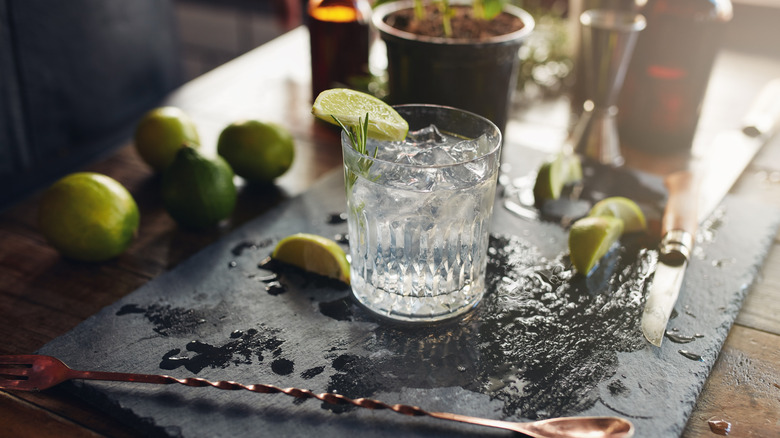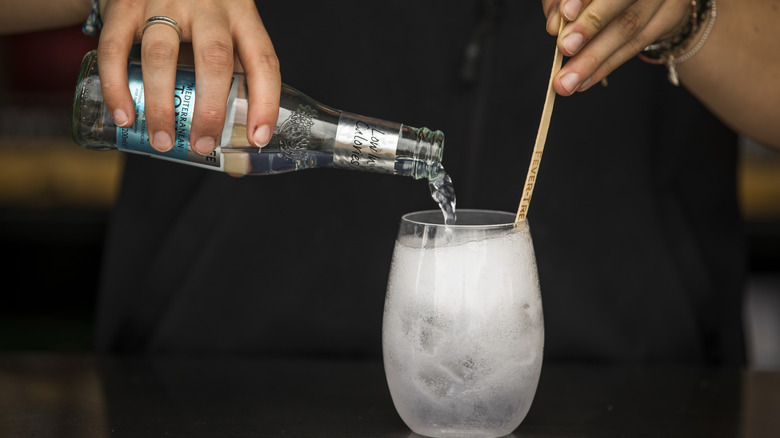Opening Room-Temperature Tonic Water Is A Big Mistake
Nothing ruins a gin and tonic faster than a flat tonic water. The carbonation bubbles from tonic water give gin and tonic an elevated crisp, refreshing element that helps to bring out the botanical notes found in gin. When tonic water loses its carbonation it turns the mixed drink into a watery concoction that ruins the textural experience of the drink and wastes your gin. A simple solution to avoiding this watered-down reaction is to make sure your gin and tonics are served with cold tonic water.
Tonic water that sits at room temperature loses its carbonation faster than if it sits in the fridge. This is because the carbon dioxide that creates carbonation can more easily escape in warmer conditions. When you use chilled tonic water it takes longer for the drink to reach room temperature and traps bubbles for longer as well. As a bonus, it takes less ice to keep your drink cool and preserves the quality of your gin and tonic. If you're really committed to keeping the integrity of your drink you can always frost your serving glasses by placing them in a freezer or filling the glass with cracked ice before you're ready to serve.
Best practices for using tonic water
To get the crispest tonic water each time you craft a drink make sure to put your tonic water in your fridge at least 30 minutes before serving. But ideally, aim to store your tonic water in the fridge at all times or at least 24 hours before creating your drinks. If serving your gin and tonics over ice try cracking the ice that'll be used in the drink. When you crush ice you expose the center, which is the coldest part in an ice cube. The goal is to keep the tonic water cold for as long as you'll be drinking it. But temperature is not the only element to having a bubbly gin and tonic.
Try using smaller quantities of tonic water at a time to help limit the exposure of tonic water to the environment. You may want to consider purchasing smaller individual bottles of tonic water to use for each drink versus a larger bottle to divide among all the drinks for the night. How you pour your tonic water can also impact the carbonation as well. It's advised to pour your tonic water like you'd pour a beer. Tilt your glass at about a 30-degree angle and slowly pour your tonic water. As you pour you'll slowly bring the glass back upright. To mix your gin and tonic use a bar spoon to stir, and avoid over-stirring as this dissipates the carbonation quicker.

